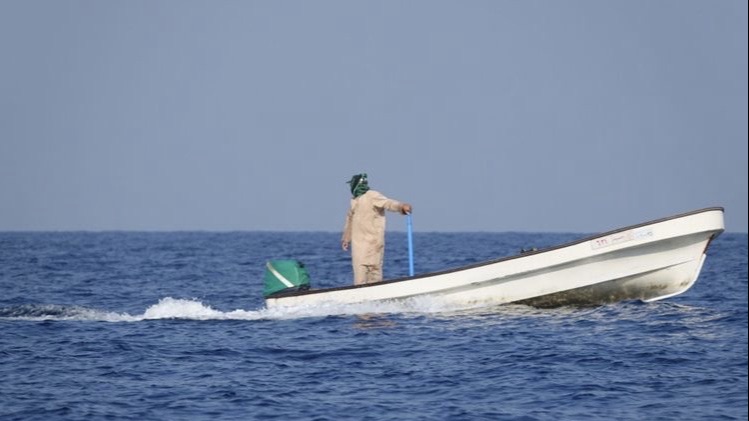(Continued from the previous text)
In the central mountains of the Sultanate of Oman, there are some earth-colored stone buildings hidden among the hills, connected to the towering mountains behind them. The clusters of houses rise high on the mountain tops and slope down the hills, giving the impression of an abandoned ghost town at first glance. This is the ancient city of Misfah Labreein, which dates back 300 years and has been listed as a World Heritage Site by UNESCO.
Get off the car and walk forward
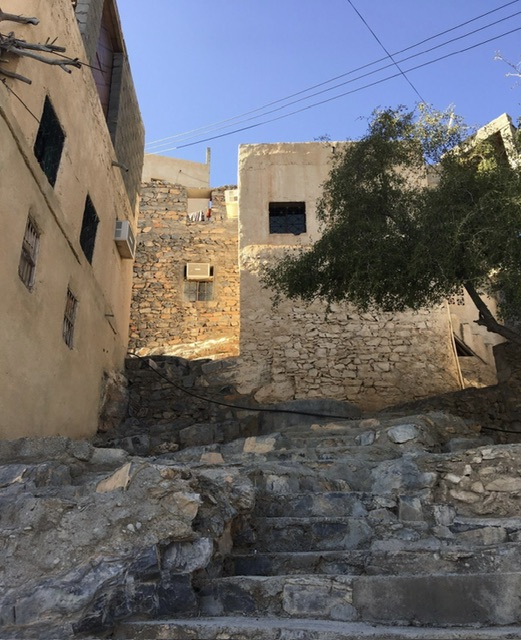
Misfat is a green ancient village located 160 kilometers from the capital, Muscat. It has a population of about 300 to 400 people.
In Oman, it is known as "Paradise on Earth." Its features include ancient villages nestled among palm trees in the deep mountains, quaint alleys, and old buildings showcasing traditional crafts.
At an altitude of over 1,000 meters, the old houses of the indigenous residents are built on the slopes of the mountain. The ancient houses are lined up shoulder to shoulder, dancing up and down with the terrain of the mountain. From a distance, it seems as if the houses and fortresses grow out of the hillside alongside the trees and flowers, providing a unique visual pleasure.
It is said that the first house in the village of Misfat Al Abriyeen was built 200 years ago, and local farmers rely on growing fruits such as bananas and lemons for their livelihood.
Due to the government developing this area into a tourist attraction for outsiders, the indigenous people were relocated to new homes, which caused significant resentment among them, as they felt that outsiders disrupted their peaceful lives.
We observed the indigenous people's expressions of hostility and dissatisfaction towards tourists.
Deep in the mountains, this is an ancient village in its original ecological state.
Walking through the winding paths into the village, the narrow stone alleys feature steep steps going up and down, with red flowers and green leaves climbing the walls. The light casts a dazzling golden glow on the entire village built on yellow earth and rock, and at the end, there is a vast expanse of green palm trees.
The Falaj water channel runs through the village from top to bottom along the mountain's slope, and the small bathing huts by the channel are quite rare (I didn't take a photo, what a pity!).
In front and behind the houses are lush banana trees and palm trees.
This ancient mountain village surprisingly has such a great place to relax and enjoy coffee.
We had coffee and dates here, taking a short break.
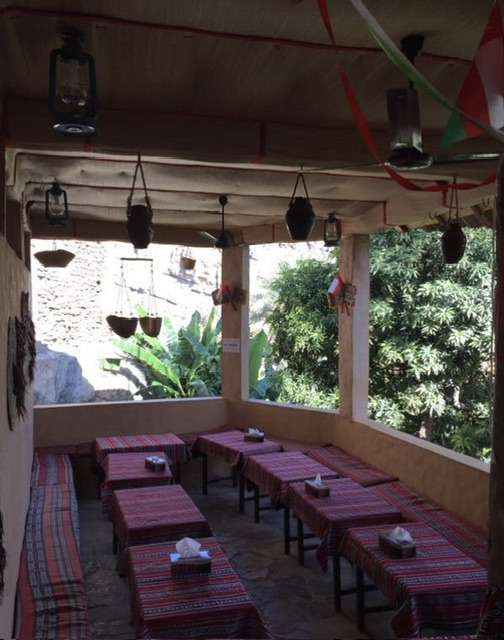
There are not many tourists here; we saw only a few Europeans and Americans, and Chinese tourists are probably even rarer.
The Falaj (water channel) is built along the mountain's contours.
Nizwa Fort and market, the ancient Falaj irrigation system, the ruins of Bahla Fort, and the stone village deep in the "Misfat" mountains. This day was quite full, but fortunately, the distances are not far apart, as Oman is not very large in area.
On January 30, the entire day was filled with the most distinctive famous attractions in Oman. We returned to the hotel in the evening.
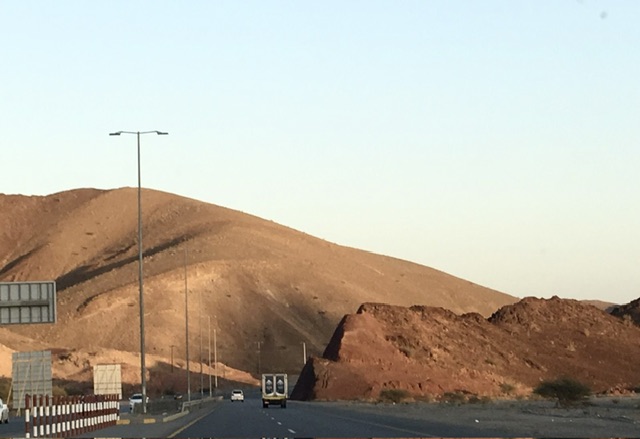
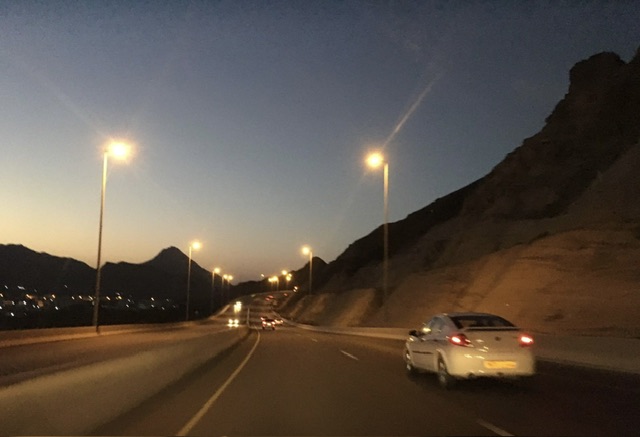
On January 31, we continued our tour of Oman, focusing on the capital, Muscat.
After waking up in the morning, we solved our breakfast problem at a nearby McDonald's, which was surprisingly good for an Arab Islamic country!
The prices are reasonable and acceptable. But don't forget that the currency is in rials, not yuan; 1 rial is equivalent to about 19 to nearly 20 yuan.

After breakfast, we headed towards the yacht dock, where the morning activity was to go out to sea to look for wild dolphins.
At the yacht dock, we saw an old captain who would take us out to sea.
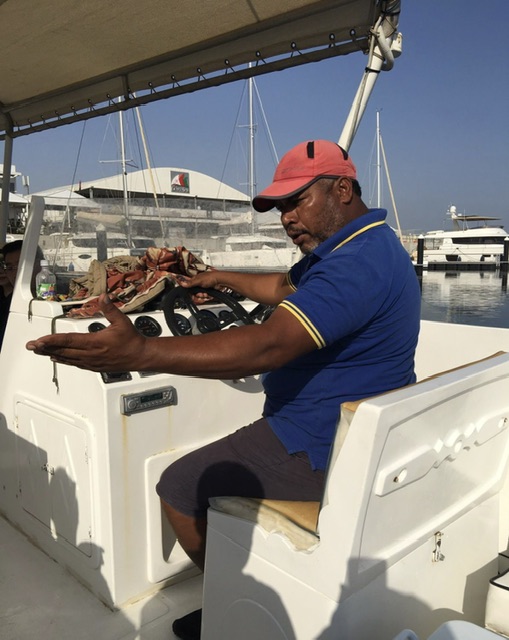
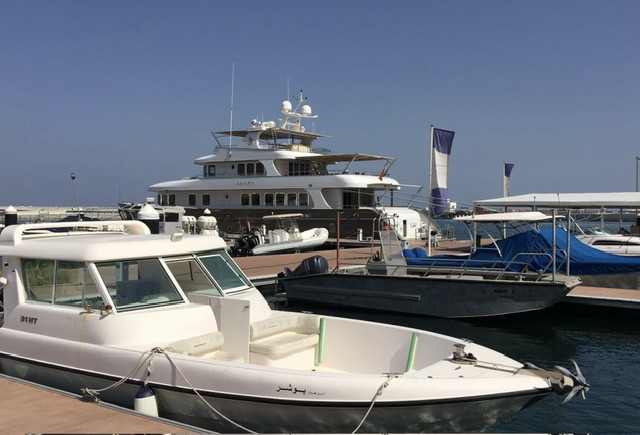
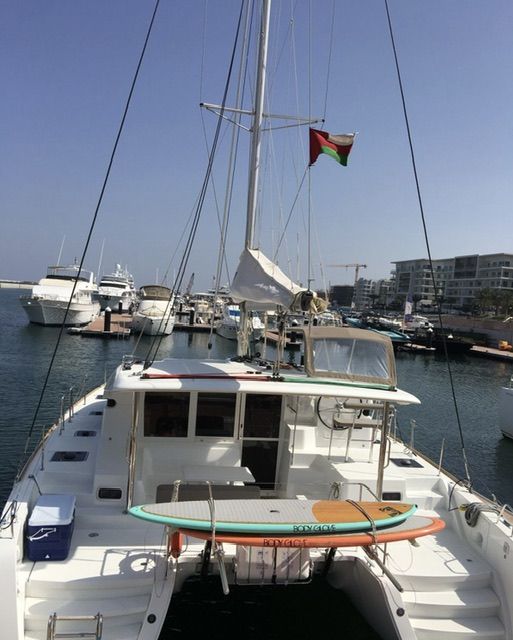
Departing from The Wave private yacht harbor, we sailed towards the Gulf of Oman.
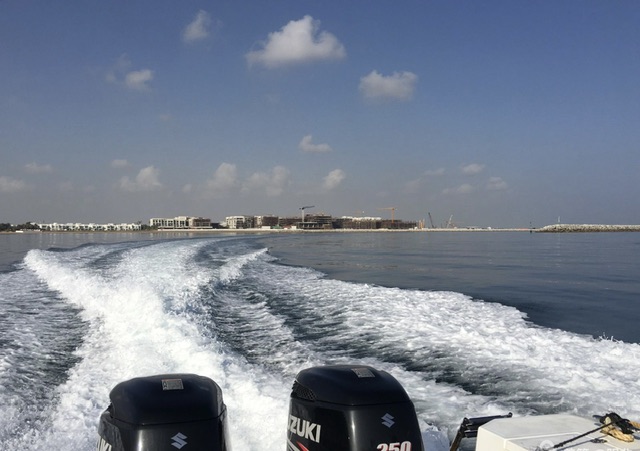
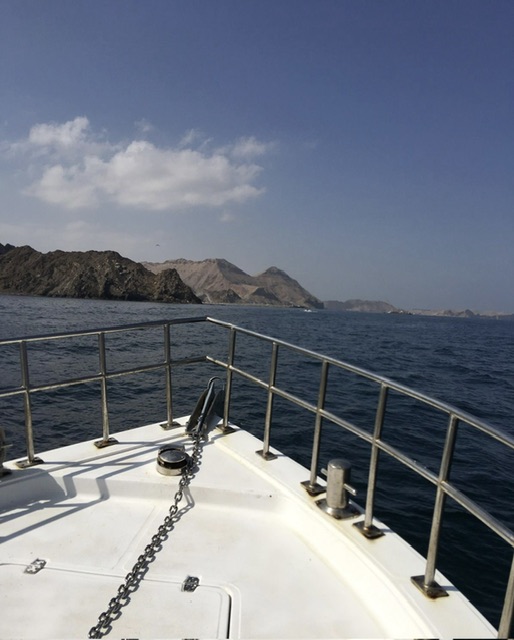
The yacht sped through the Strait of Hormuz in the Persian Gulf, feeling the cool sea breeze on our faces, with the engine at the back creating long waves.
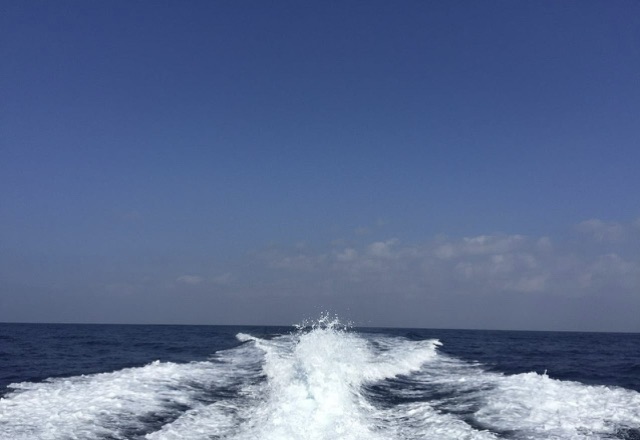
This area should be where dolphins appear; it took us more than half an hour of high-speed sailing from the yacht dock to reach here.
Searching for and watching wild dolphins in the Gulf of Oman is a unique tourism project.
Entering the deep sea area, the color of the water is different.
We kept searching and moving, but there was no sign of dolphins. The guide, Xiao Zhao, translated the captain's words: not every trip out to sea guarantees a sighting.
Perhaps due to the weather, perhaps there were no fish schools nearby to attract them, perhaps they were shy around Chinese guests, or perhaps...
We saw some fishermen's small fishing boats.
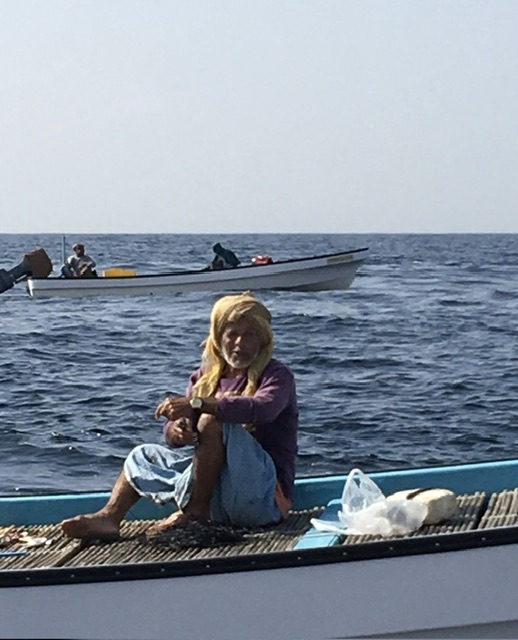
We approached to get a closer look. Took a few photos of the old fishermen!
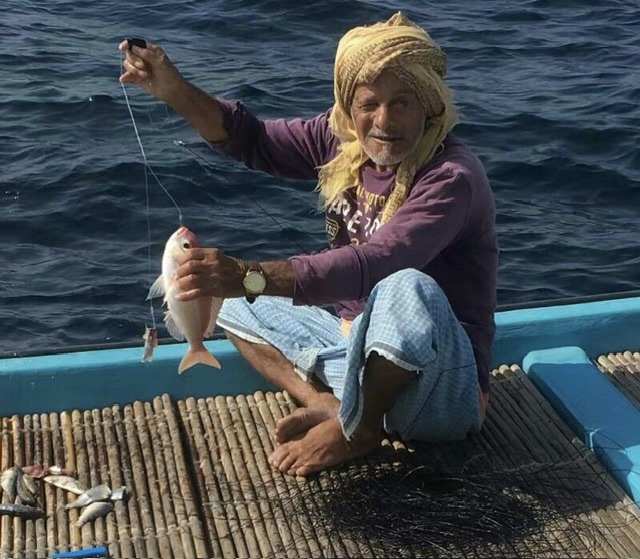
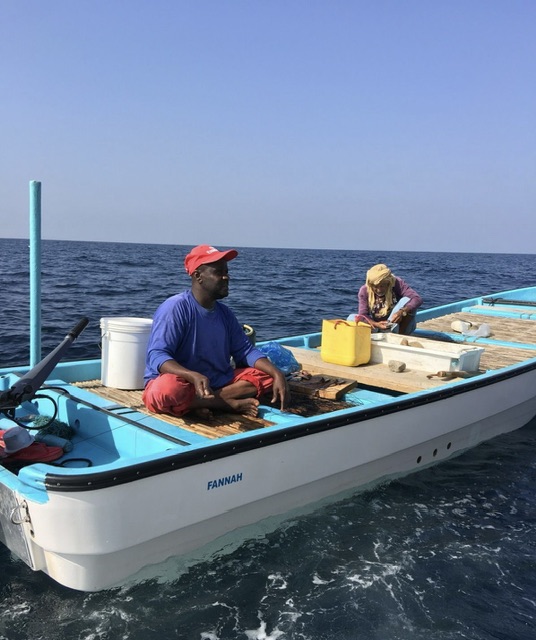
Not finding any dolphins, the old captain was unwilling to give up and stubbornly communicated with nearby fishermen by phone, asking if they had seen any dolphins that day.
We had already spent a considerable amount of time at sea, and we needed to have lunch, as there were other activities planned for the afternoon.
Reluctantly, the old captain turned back!
After several hours of searching for dolphins at sea without success, we could only leave with regrets, giving us a reason to come back again.
Facing the sea, the Al Alam Palace has two castles, Jalali and Mirani, built by the Portuguese in the sixteenth century, still remaining on the mountain tops on both sides.
The old captain felt very guilty for not taking us to see dolphins at sea, so he specifically steered the boat to the waters near the palace, allowing everyone to view the palace and the two castles from the sea.
The sea breeze was strong and the waves were high; I was fully equipped, resembling a member of a scientific expedition team.
This is a dolphin picture from the Gulf of Oman provided by the guide.
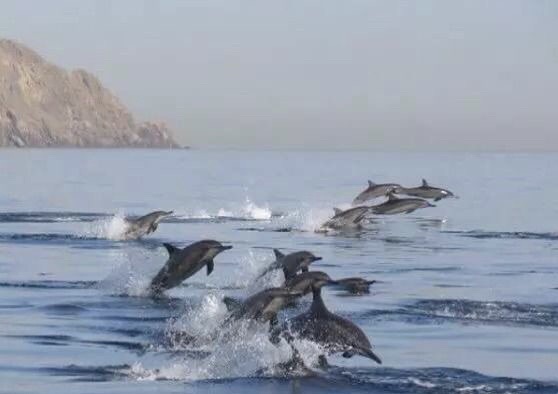
We left the port and returned to the city for lunch.
It was noon, and the new district avenue was filled with luxury cars.
Lunch was a rich Turkish meal, delicious dishes that exceeded expectations!
Soft-fried squid rings, made from fresh squid, were crispy, soft, and fragrant, unlike anything I had eaten before. Amazing!
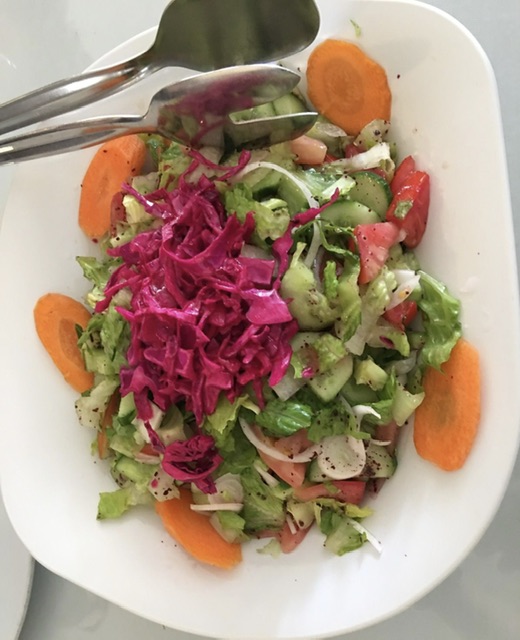
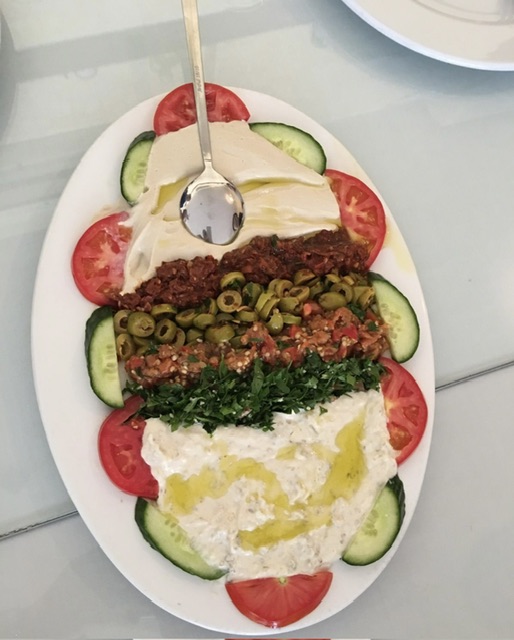
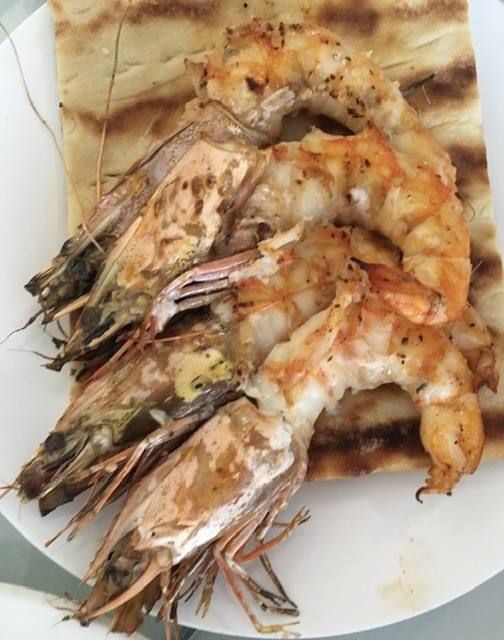
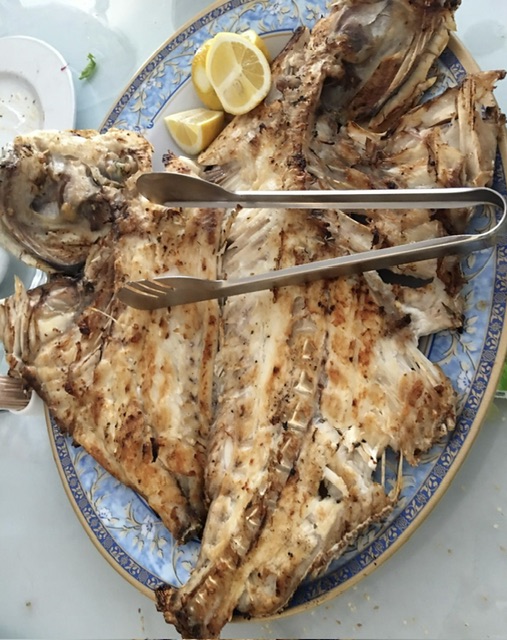
Grilled large shrimp, grilled fish, and grilled bread were all huge, tender, and fragrant!
(To be continued)
